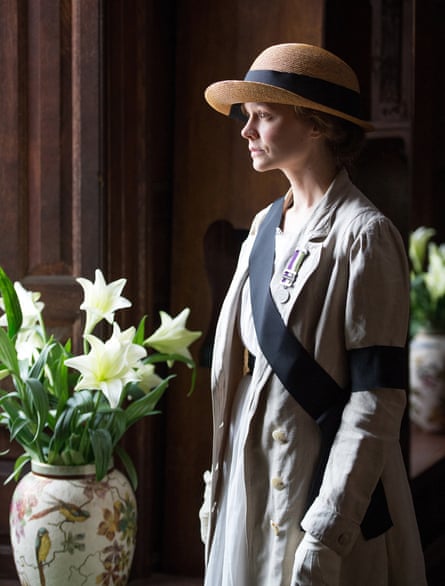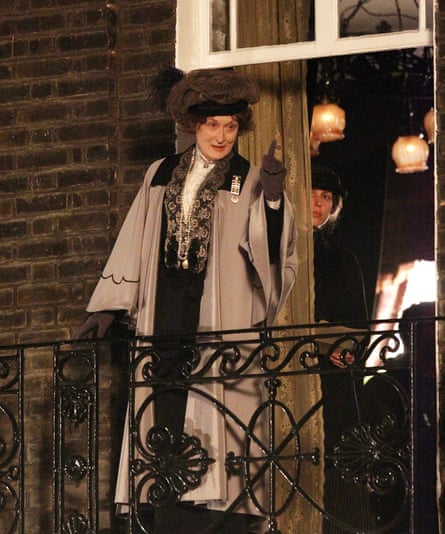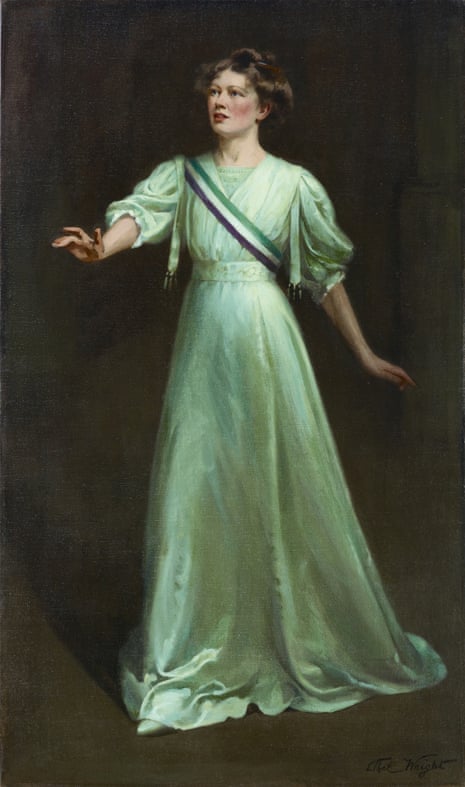Suffragette Emmeline Pankhurst and her daughter Christabel were known for arson, window smashing and picture slashing, but less is know about their refined dress sense and elegance. As Sylvia Pankhurst, Christabel’s sister, once noted: “Many suffragists spend more money on clothes than they can comfortably afford, rather than run the risk of being considered outré, and doing harm to the cause”.

Fashion, feminism and politics has always been heated territory, and the suffragettes knew this. Instead of deploying a strategy of resistance by refusal, they chose resistance through reversal. They sought to effect change not by challenging contemporary fashion and ideals of femininity, but by conforming to them. Haunted by the stereotypical image of the “strong-minded woman” in masculine clothes, pebble-thick glasses and galoshes created by cartoonists, they chose instead to present a fashionable, feminine image.
The suffragettes took care to “appeal to the eye” – particularly when in full glare of media attention on parade or demonstrating. In 1908, one of their newspapers, Votes for Women, declared: “The suffragette of today is dainty and precise in her dress.” Five years later, sellers of the Suffragette were requested to “dress themselves in their smartest clothes”.

The avoidance of sartorial affront worked. Membership numbers grew, and it became fashionable to identify with the struggle for the vote, even if only by wearing a small piece of jewellery picked out in semi-precious coloured stones or enamel. The suffragettes’ colour scheme, devised in 1908 by Emmeline Pethick-Lawrence, co-editor of Votes for Women, was an early triumph for fashion branding. Suffragettes wore purple for loyalty and dignity, white for purity, and green for hope. Members were encouraged to wear the colours “as a duty and a privilege”. Selfridges and Liberty sold tricolour-striped ribbon for hats, belts, rosettes and badges, as well as coloured garments, underwear, handbags, shoes, slippers and toilet soap.

Sylvia Pankhurst trained at the Royal College of Art, and designed much of the visual identity – branding, really – of the WSPU (Women’s Social and Political Union). She may well have had a hand in the choice of dress worn by her sister in Ethel Wright’s monumental portrait in the National Portrait Gallery. Christabel Pankhurst, a militant figurehead of the cause, who was imprisoned five times, strides across the canvas as if towards enfranchisement, one hand raised in greeting, wearing an elegant, “artistic”, full-length green satin dress with delicate embroidery and tricolour-striped regalia. The portrait is a reminder that the black-and-white canon of suffrage imagery does not tell the whole story.
- Cally Blackman is a lecturer at Central Saint Martins (University of the Arts, London).
- A Portrait of Fashion, a new National Portait Gallery book by Cally Blackman and
Aileen Ribeiro is published this month, priced £24.95.

Comments (…)
Sign in or create your Guardian account to join the discussion